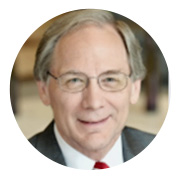
Get smart grid training from IEEE. A not-for-profit organization, IEEE is the world's largest technical professional organization dedicated to advancing technology for the benefit of humanity. IEEE Continuing and Professional Education courses are designed to help engineers stay up-to-date on the latest technologies. Produced and vetted by leading experts, you can count on IEEE Continuing Education courses to equip you with the information you need to stay current in your field.
Modernizing the Smart Grid
One of the biggest frontiers in electrical engineering today is the development and implementation of smart grid technology. Fueled by the global demand for greener technologies and alternative fuels, environmentally-friendly smart grid technology has the ability to stimulate stagnated economies and change the way power is delivered to electricity consumers around the world. Give your team the smart grid training they need with these courses.
Modernizing the Smart Grid is a four-course program designed to get you and your team up-to-date quickly on the latest smart grid technologies. Course topics include:
- Strong Grid Before Smart Grid
- Smart Distribution Systems
- The Digitized Grid
- Engaging Consumers in the Smart Grid Marketplace
Upon successful completion of Modernizing the Smart Grid, your engineers will receive valuable CEUs/PDHs from IEEE that can be used to maintain engineering licenses.
Course Program Details
The Modernizing the Smart Grid Society online training program includes the following courses:
Strong Grid Before Smart Grid
Focuses on how to think about grid modernization and explores the drivers of grid modernization and the power industry's shift in thinking from adding devices and systems to holistic solutions. This section of the course program discusses the role of policy, technology, and standards in creating holistic solutions. Module 1 explains the efficacy of a strong grid based on an information and communication technology, or ICT, foundation, and why current investments in intelligence and visibility focus on the distribution system.
Smart Distribution Systems
The second module focuses on distribution: visibility and data for a self-Healing grid and addresses the standards and communication protocols that support a strong grid in which intelligent electronic devices, or IEDs, are integrated with the ICT foundation for visibility into distribution system functions. This section delves into the principles and practices of cybersecurity, including customers' data privacy. Module 2 takes a deep dive into six holistic solutions for efficiency, reliability, and resiliency and the flexible data communication architecture that enables them to meet utility challenges.
The Digitized Grid
Examines methods for optimal operations of a smarter, digitized grid. The topics covered are data-driven programs made possible by the big data that characterizes a digitized grid, from generation to end user. It begins by examining how the utility enterprise can optimize its use of data to support business drivers and customer service.
Engaging Consumers in the Smart Grid Marketplace
One of the biggest frontiers in electrical engineering today is the development and implementation of smart grid technology. Fueled by the global demand for greener technologies and alternative fuels, environmentally-friendly smart grid technology has the ability to stimulate stagnated economies and change the way power is delivered to electricity consumers around the world. This course covers the new power industry reality, including consumers, third parties, and future markets.
Meet the Instructor

John McDonald
John McDonald is the Smart Grid Business Development Leader for GE Power's Grid Solutions business. John brings his 44 years of full-time work experience in electric power system automation to this course. John is a Life Fellow of IEEE, which he joined in 1971 as an undergraduate Electrical Engineering student at Purdue University. John was the IEEE Power & Energy Society President in 2006-2007, and has written 100 articles and papers, and co-authored five books.

